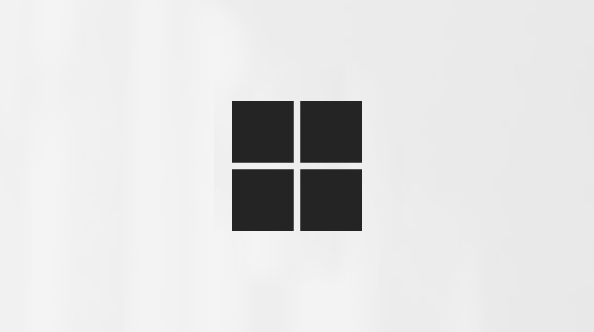You can apply text formatting to field results in the same way you format any text in your document (for example, bold, underlined, and so on): select the field code or field result, and apply formatting.
Note: If you update a field, any text formatting that you applied to the field results may be lost. To retain the formatting, include the \* MERGEFORMAT switch in the field code. When you insert fields by using the Field dialog box, the \* MERGEFORMAT switch is included by default.
In addition to text formatting, you can control the format of field results at the field level, with general switches that determine how data in the field is displayed. Depending on the field code, there are three types of general switches:
-
Format switch
-
Numeric format switch
-
Date-Time format switch
The Format field switch (\*) defines how to display field results. The format instructions determine the following:
-
The use of uppercase and lowercase letters
-
Number formats — for example, whether 9 is displayed as ix (roman numerals) or ninth (ordinal text)
-
character formats
Format switches also retain a field result's formatting when the field is updated.
The following is a list of switches and the items that they capitalize:
-
\* Caps This switch capitalizes the first letter of each word. For example, { FILLIN "Type your name:" \* Caps } displays Luis Alverca even if the name is typed in lowercase letters.
To select this option in the Field Options dialog box, click Title case.
-
\* FirstCap This switch capitalizes the first letter of the first word. For example, { COMMENTS \* FirstCap } displays Weekly report on sales.
To select this option in the Field Options dialog box, click First capital.
-
\* Upper This switch capitalizes all letters. For example, { QUOTE "word" \* Upper } displays WORD.
To select this option in the Field Options dialog box, click Uppercase.
-
\* Lower This switch capitalizes none of the result; all letters are lowercase. For example, { FILENAME \* Lower } displays weekly sales report.doc.
This switch has no effect if the entire field that contains the switch is formatted as small capital letters.
To select this option in the Field Options dialog box, click Lowercase.
The following is a list of number switches and their results:
-
\*alphabetic This switch displays results as alphabetic characters. The result has the same case as the word "alphabetic" in the field code. For example, { SEQ appendix \* ALPHABETIC } displays B (instead of 2), and { SEQ appendix \* alphabetic } displays b.
To select this option in the Field Options dialog box, click a, b, c,.
-
\*Arabic This switch displays results as Arabic cardinal numerals. For example, { PAGE \* Arabic } displays 31.
Notes:
-
If the Number format setting in the Page Number Format dialog box is not Arabic, this switch overrides the Number format setting.
-
For page numbers only, there is also an ArabicDash format, which displays results as Arabic cardinal numbers surrounded by hyphen characters. For example, { PAGE \* ArabicDash } displays - 31 -.
To select this option in the Field Options dialog box, click 1, 2, ,3, ....
-
-
\*CardText This switch displays results as cardinal text. The result is formatted in lowercase letters unless you add a format switch to specify a different capitalization. For example, { = SUM(A1:B2) \* CardText } displays seven hundred ninety, and { = SUM(A1:B2) \* CardText \* Caps } displays Seven Hundred Ninety.
To select this option in the Field Options dialog box, click One, Two, Three.
-
\*DollarText This switch displays results as cardinal text. Word inserts and at the decimal place and displays the first two decimals (rounded) as Arabic numerators over 100. The result is formatted in lowercase letters unless you add a format switch to specify a different capitalization. For example, { = 9.20 + 5.35 \* DollarText \* Upper } displays FOURTEEN AND 55/100.
To select this option in the Field Options dialog box, click Dollar Text.
-
\*Hex This switch displays results as hexadecimal numbers. For example, { QUOTE "458" \* Hex } displays 1CA.
To select this option in the Field Options dialog box, click hex ....
-
\*OrdText This switch displays results as ordinal text. The result is formatted in lowercase letters unless you add a format switch to specify a different capitalization. For example, { DATE \@ "d" \* OrdText } displays twenty-first, and { DATE \@ "d" \* OrdText \* FirstCap } displays Twenty-first.
To select this option in the Field Options dialog box, click First, Second, Third, ....
-
\*Ordinal This switch displays results as ordinal Arabic numerals. For example, { DATE \@ "d" \* Ordinal } displays 30th.
To select this option in the Field Options dialog box, click 1st, 2nd, 3rd.
-
\*roman This switch displays results as Roman numerals. The result has the same case as the word "roman" in the field code. For example, { SEQ CHAPTER \* roman } displays xi, and { SEQ CHAPTER \* ROMAN } displays XI.
To select this option in the Field Options dialog box, click I, II, III,.
The following are character formatting switches and their results:
-
\*Charformat This switch applies the formatting of the first letter of the field name to the entire result. The result of the following example has bold formatting because the R in REF is bold.
{ REF chapter2_title \* Charformat } displays Whales of the Pacific in bold text.
To add this switch, type it in the field code or in the Field codes box in the Field dialog box.
-
\*MERGEFORMAT This switch applies the formatting of the previous result to the new result. For example, if you select the name displayed by the field { AUTHOR \* MERGEFORMAT } and apply bold formatting, Word retains the bold formatting when the field is updated to display a new author name.
When you insert fields by using the Field dialog box , the \*MERGEFORMAT switch is included by default. You can turn this option off by clearing the Preserve formatting during updates check box in the Field dialog box.
The Numeric format switch (\#) specifies the display of a numeric result.
For example, the switch \# $,0.00 in { = SUM(ABOVE) \# $,0.00 } displays a result such as "$4,455.70." If the result of a field is not a number, this switch has no effect.
Note: Quotation marks are not required around simple numeric formats that do not include spaces — for example, { MarchSales \# $,0.00 }. For more complex numeric formats and those that include text or spaces, enclose the numeric format in quotation marks, as shown in the following examples. Word adds quotation marks to numeric format switches if you insert a field by using the Field dialog box or the Formula command in the Data group of the Layout tab (Table Tools contextual tab).
Combine the following format items to build a numeric format switch:
-
0 (zero) This format item specifies the requisite numeric places to display in the result. If the result does not include a digit in that place, Word displays a 0 (zero). For example, { = 4 + 5 \# 00.00 } displays 09.00.
-
# This format item specifies the requisite numeric places to display in the result. If the result does not include a digit in that place, Word displays a space. For example, { = 9 + 6 \# $### } displays $ 15.
-
x This format item drops digits to the left of the "x" placeholder. If the placeholder is to the right of the decimal point, Word rounds the result to that place. For example:{ = 111053 + 111439 \# x## } displays 492.{ = 1/8 \# 0.00x } displays 0.125.{ = 3/4 \# .x } displays .8.
-
. (decimal point) This format item determines the decimal point position. For example, { = SUM(ABOVE) \# $###.00 } displays $495.47.
Use the decimal symbol that is specified as part of the regional settings in Control Panel.
-
, (digit grouping symbol) This format item separates a series of three digits. For example, { = NetProfit \# $#,###,### } displays $2,456,800.
Use the digit grouping symbol that is specified as part of the regional settings in Control Panel.
-
- (minus sign) This format item adds a minus sign to a negative result or adds a space if the result is positive or 0 (zero). For example, { = 10 - 90 \# -## } displays -80.
-
+ (plus sign) This format item adds a plus sign to a positive result, a minus sign to a negative result, or a space if the result is 0 (zero). For example, { = 100 - 90 \# +## } displays +10, and { = 90 - 100 \# +## } displays -10.
-
%, $, *, and so on This format item includes the specified character in the result. For example, { = netprofit \# "##%" } displays 33%.
-
"example formatting for positive; negative" This format item specifies different number formats for positive and negative results, separated by a semicolon. For example, if the bookmark Sales95 is a positive value, the field { Sales95 \# "$#,##0.00;-$#,##0.00" } displays the value with regular formatting — for example, "$1,245.65". A negative value is displayed with bold formatting and a minus sign — for example, -$ 345.56.
-
"example formatting for positive; negative; zero" This format item specifies different number formats for a positive result, a negative result, and a 0 (zero) result, separated by semicolons. For example, depending on the value of the Sales95 bookmark, { Sales95 \# "$#,##0.00;($#,##0.00);$0" } displays positive, negative, and 0 (zero) values as follows: $1,245.65, ($ 345.56), $0.
-
'text' This format item adds text to the result. Enclose the text in single quotation marks. For example, { = { Price } *8.1% \# "$##0.00 'is sales tax' " } displays $347.44 is sales tax.
-
`numbereditem` This format item displays the number of the preceding item that you numbered by using the Caption command (References tab, Captions group) or by inserting a SEQ field. Enclose the item identifier, such as "table" or "figure," in grave accents (`). The sequential number is displayed in Arabic numerals. For example, { = SUM(A1:D4) \# "##0.00 'is the total of Table' `table`" } displays 456.34 is the total of Table 2.
The Date-Time format switch (\@) specifies how to display the date or time.
For example, the switch \@ "dddd, MMMM d, yyyy" in the field { DATE \@ "dddd, MMMM d, yyyy" } displays "Friday, November 23, 2019." Combine the following date and time instructions — day (d), month (M), and year (y); hours (h) and minutes (m) — to build a date-time format. You can also include text, punctuation, and spaces.
Month (M)
The letter M must be uppercase to distinguish months from minutes.
-
M This format item displays the month as a number without a leading 0 (zero) for single-digit months. For example, July is 7.
-
MM This format item displays the month as a number with a leading 0 (zero) for single-digit months. For example, July is 07.
-
MMM This format item displays the month as a three-letter abbreviation. For example, July is Jul.
-
MMMM This format item displays the month as its full name.
Day (d)
The letter d displays the day of the month or the day of the week. The letter d can be either uppercase or lowercase.
-
d This format item displays the day of the week or month as a number without a leading 0 (zero) for single-digit days. For example, the sixth day of the month is displayed as 6.
-
dd This format item displays the day of the week or month as a number with a leading 0 (zero) for single-digit days. For example, the sixth day of the month is displayed as 06.
-
ddd This format item displays the day of the week or month as a three-letter abbreviation. For example, Tuesday is displayed as Tue.
-
dddd This format item displays the day of the week as its full name.
Year (y)
The letter y displays the year as two or four digits. The letter y can be either uppercase or lowercase.
-
yy This format item displays the year as two digits with a leading 0 (zero) for years 01 through 09. For example, 1999 is displayed as 99, and 2006 is displayed as 06.
-
yyyy This format item displays the year as four digits.
Hours (h)
A lowercase h bases time on the 12-hour clock. An uppercase H bases time on the 24-hour, or military, clock; for example, 5 P.M. is displayed as 17.
-
h or H This format item displays the hour without a leading 0 (zero) for single-digit hours. For example, the hour of 9 A.M. is displayed as 9.
-
hh or HH This format item displays the hour with a leading 0 (zero) for single-digit hours. For example, the hour of 9 A.M. is displayed as 09.
Minutes (m)
The letter m must be lowercase to distinguish minutes from months.
-
m This format item displays minutes without a leading 0 (zero) for single-digit minutes. For example, { TIME \@ "m" } displays 2.
-
mm This format item displays minutes with a leading 0 (zero) for single-digit minutes. For example, { TIME \@ "mm" } displays 02.
Seconds (s)
-
s This format item displays seconds without a leading 0 (zero) for single-digit seconds. For example { TIME \@ “s” displays 5.
-
ss This format item displays seconds with a leading 0 (zero) for single-digit seconds For example { TIME \@ “ss” displays 05.
A.M. and P.M. (AM/PM)
This displays A.M. and P.M. To change the A.M. and P.M. symbols for Microsoft Windows, change the regional settings in Control Panel.
-
am/pm or AM/PM This format item displays A.M. and P.M. as uppercase. For example, { TIME \@ "h AM/PM" } and { TIME \@ "h am/pm" } display 9 AM or 5 PM.
-
'text' This format item displays any specified text in a date or time. Enclose the text in single quotation marks. For example, { TIME \@ "HH:mm 'Greenwich mean time' " } displays 12:45 Greenwich mean time.
-
character This format item includes the specified character in a date or time, such as a : (colon), - (hyphen), * (asterisk), or space. For example, { DATE \@ "HH:mm MMM-d, 'yy" } displays 11:15 Nov-6, '99.
-
`numbereditem` This format item includes in a date or time the number of the preceding item that you numbered by using the Caption command in the Captions group (References tab), or by inserting a SEQ field. Enclose the item identifier, such as table or figure, in grave accents (`). Word displays the sequential number in Arabic numerals. For example, { PRINTDATE \@ "'Table' `table` 'was printed on' M/d/yy" } displays Table 2 was printed on 9/25/02.
Note: Quotation marks are not required around simple date-time formats that do not include spaces or text — for example, { DATE \@ MM/yy }. For more complex date-time formats and those that include spaces or text, enclose the entire date-time format in quotation marks, for example, { DATE \ @ "dddd MMMM d, yyyy', at' h:mm" }. Word adds quotation marks to date-time format switches if you insert a field by using the Date and Time command in the Text group of the Insert tab or the Field dialog box.










